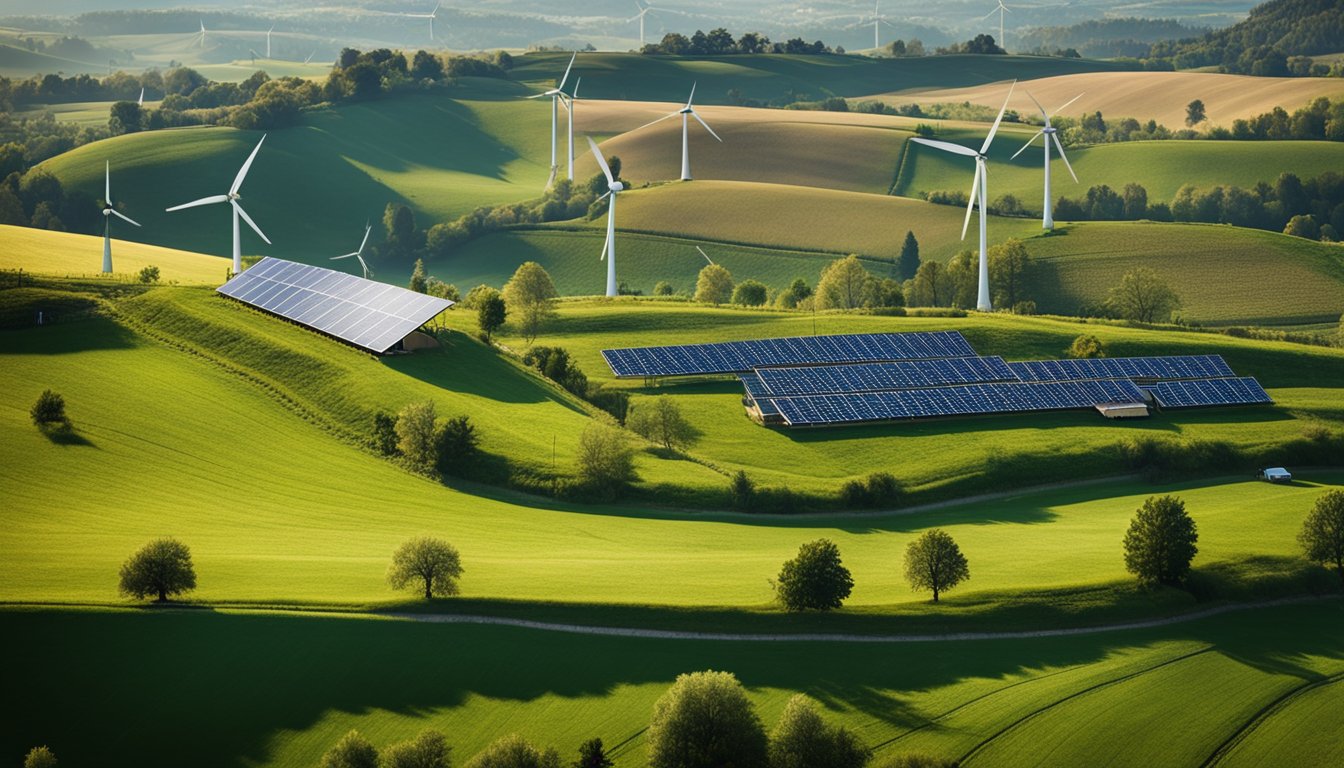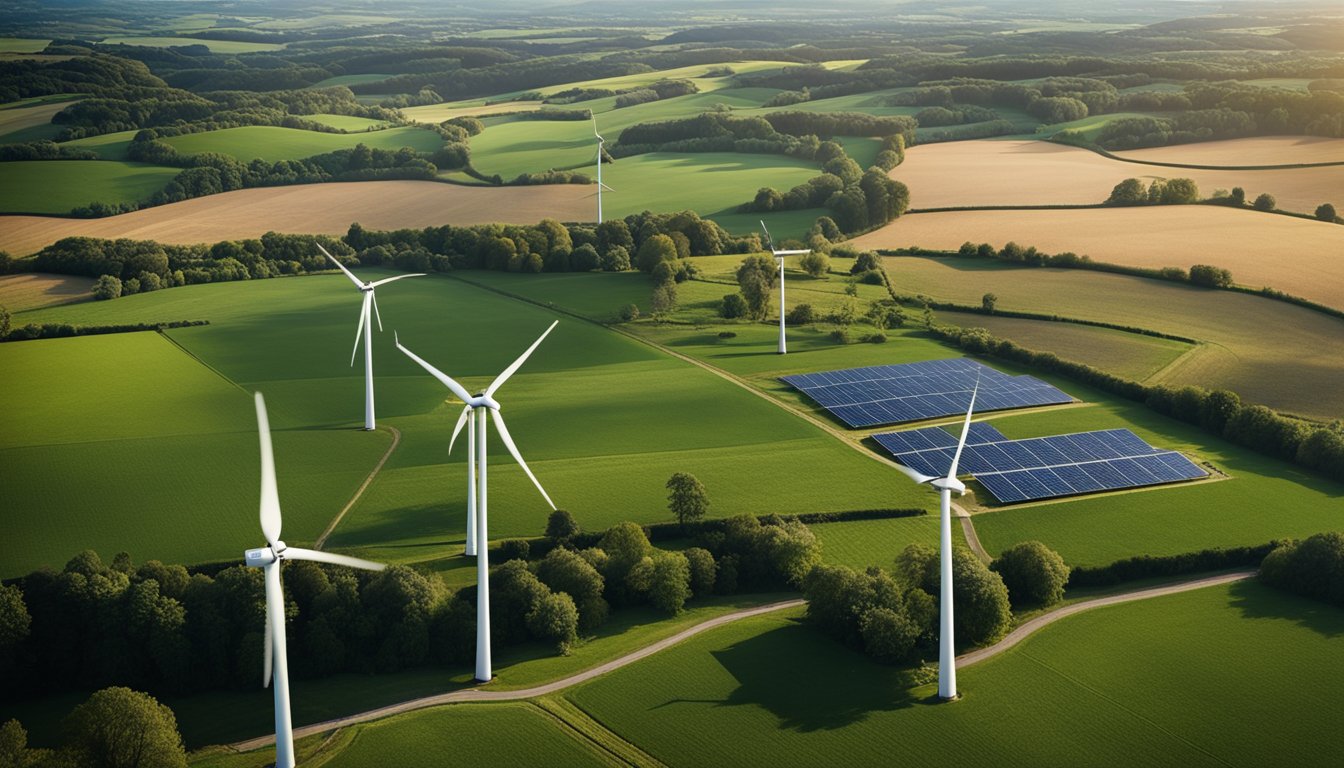Late updated: 08 Dec 2024 15:12
Written by: Oliver Bennett
Smart Grid Solutions For Rural UK Communities: Enhancing Energy Efficiency
The potential of smart grid solutions to transform rural UK communities is a topic of significant interest. As technology evolves, these solutions present a promising pathway towards ensuring energy security and sustainability. Smart grid solutions enable a more efficient, reliable, and environmentally friendly energy supply for rural areas, reducing reliance on traditional fuels and improving overall energy management.

Rural communities often face unique challenges, such as limited access to the national grid and higher energy costs. By implementing advanced smart grid technologies, we can decentralise energy production, allowing these communities to generate and manage their power more effectively. This not only enhances their energy independence but also contributes to a national decrease in carbon emissions.
Furthermore, integrating smart energy systems helps rural areas become more resilient to fluctuations in energy supply and demand. With the ability to generate renewable energy locally, these communities can supply excess power back to the national grid, offering a sustainable alternative to traditional energy sources. This way, we not only support local economies but also contribute positively to the broader energy landscape.
Key Takeaways
- Smart grids enhance energy efficiency and reliability in rural areas.
- Decentralised energy strengthens community independence and sustainability.
- Rural areas can support the national grid with renewable energy contributions.
Scope and Impact of Smart Grids in Rural UK
Smart grids present transformative opportunities for rural UK. They enhance energy supply reliability, promote sustainability through renewable energies, and facilitate rural electrification. However, they also come with unique challenges that need careful navigation.
Understanding Smart Grids and Their Potential
Smart grids significantly advance how we manage and distribute electricity in rural areas. By integrating information and communications technology, they improve energy efficiency and supply reliability. Renewable energy sources, such as wind or solar power, can be better integrated, aligning perfectly with climate change goals and decarbonisation efforts.
In rural UK, these grids offer an innovative solution to meet fluctuating energy demand. They ensure a steady supply while reducing dependence on traditional, non-renewable energy sources. This approach enhances sustainability and positions rural communities at the forefront of a green energy revolution.
Challenges and Opportunities for Rural Electrification
Despite their potential, smart grids face several challenges in rural electrification. Infrastructure development in remote areas often involves significant upfront investment. Limited access to advanced technologies can impede progress and innovation.
However, the opportunities are equally compelling. Smart grids can increase access to energy and encourage local energy production through microgrids. This is particularly vital for rural areas lacking consistent energy access. By leveraging local resources, communities can achieve greater energy independence and financial savings.
As we continue to embrace smart grid technologies, addressing challenges head-on while maximising opportunities will be crucial for successful rural electrification in the UK.
Technological Advancements and Sustainability

Our exploration of technological advancements highlights their crucial role in achieving sustainable energy solutions in rural UK communities. By focusing on renewable energy systems, improvements in energy storage, and innovative conservation practices, we aim to illustrate how these technologies can contribute to economic growth and energy efficiency.
Integration of Renewable Energy Systems
As renewable generation becomes integral to rural energy strategies, solar panels and wind energy capture prominence. By harnessing local resources, these communities can significantly reduce their reliance on fossil fuels and lower carbon emissions.
The deployment of smart meters assists in monitoring and efficiently distributing the energy generated from solar and wind sources. As a result, renewable technologies contribute to a more balanced and resilient local grid. Investments in solar energy installations empower households and businesses to produce energy locally, enhancing energy security and creating a foundation for sustainable economic growth.
Enhancements in Energy Storage and Security
Emerging advancements in battery storage crucially support the stability and efficiency of rural grids. Energy storage systems store surplus energy generated during peak production times, making it available during high-demand periods. This not only ensures consistent energy availability but also enhances energy security by reducing dependency on external power sources.
Further development of smart grid solutions integrates energy storage into existing systems, enabling more precise control over energy distribution. Technologies such as heat pumps serve as instrumental elements in increasing the overall efficiency of energy usage, maximising the benefits of stored energy. Collectively, these improvements safeguard against outages and aid in achieving sustainable and reliable energy supply for rural communities.
Innovative Solutions for Energy Conservation
In our pursuit of improving energy efficiency, technologies that foster conservation are essential. Smart meters provide real-time data, encouraging users to optimise their energy usage patterns. By adopting such technologies, households can noticeably decrease their carbon footprint and energy bills.
Insulation and modern materials play vital roles in reducing energy loss from buildings. Improved insulation ensures that less energy is needed to maintain comfortable living environments, invigorating the development of energy-efficient homes. Moreover, the integration of EV charging stations aligns with broader sustainability goals, promoting the transition to cleaner transportation in rural areas. These innovations collectively help foster a self-sustaining energy ecosystem that empowers rural residents to conserve resources effectively.
Frequently Asked Questions

In this section, we address common inquiries about smart grid solutions in rural UK communities. Our aim is to clarify the benefits, cost-effectiveness, challenges, and contributions of smart grids to renewable energy goals in these regions. Additionally, we explore suitable technologies and their role in energy demand management.
What are the primary benefits of implementing smart grid technology in rural UK areas?
Smart grid technology enhances energy efficiency and reliability for rural areas, reducing dependency on fossil fuels. It promotes the integration of renewable energy sources, such as solar and wind, suited to rural settings. Access to real-time data helps communities optimise energy usage, resulting in cost savings and environmental benefits.
How does the cost-effectiveness of smart grid systems compare for rural communities versus urban areas?
Costs can vary; rural areas might face higher initial investments due to infrastructure needs. However, the long-term benefits often outweigh these costs. Improved energy efficiency and reduced operational costs make smart grids economically viable for rural communities, leading to sustainable energy solutions tailored to their needs.
What are the challenges faced when integrating smart grid infrastructure in remote UK regions?
Challenges include the need for significant infrastructure upgrades and the coordination among various stakeholders. The geographical remoteness of some regions may impede communication and access to resources. Ensuring consistent connectivity and overcoming resistance to technological adoption are also key hurdles.
Can smart grid solutions contribute to the renewable energy goals of rural communities in the UK?
Yes, smart grids enable more effective use of local renewable resources. By facilitating energy storage and distribution, they support the stability and integration of renewables into the grid. Rural communities benefit from cleaner energy solutions and contribute to broader national renewable energy targets.
What types of smart grid technologies are most suitable for rural UK settings?
Technologies such as advanced metering infrastructure, energy storage systems, and microgrids are suitable. These solutions offer flexibility and adaptability, crucial for meeting the unique energy demands of rural areas. They help manage energy flow and integrate multiple renewable sources seamlessly.
How do smart grids help with the management of energy demand in UK rural communities?
Smart grids provide real-time data and control over energy distribution. This enables better demand response strategies, reducing peak load stress. By accurately predicting energy needs, rural communities can balance supply and demand efficiently, leading to more stable and reliable energy delivery.
